This week on the Revised Introduction to Japanese History: the descent towards the Second World War. Why did the leadership of imperial Japan start a war many of them were aware they were unlikely to win? And how did the failures of the Meiji system enable the descent into militarism and defeat?
Sources
Hotta, Eri. Japan 1941: Countdown to Infamy
Drea, Edward. Japan’s Imperial Army: Its Rise and Fall, 1858-1945
Iriye, Akira. Power and Culture: The Japanese-American War, 1941-1945
Mitter, Rana. Forgotten Ally: China’s World War II, 1937-1945
Images
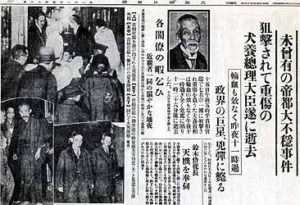
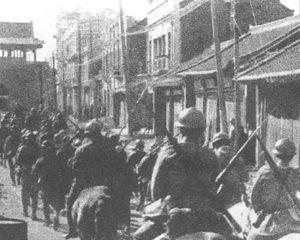
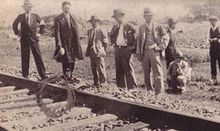
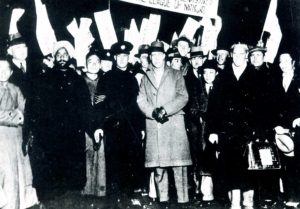

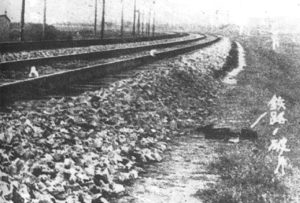
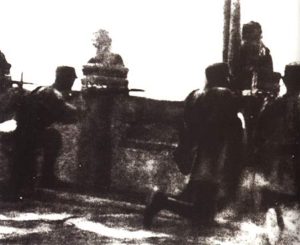
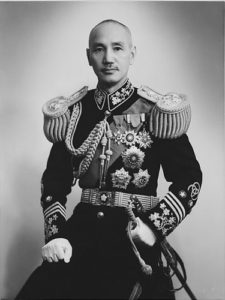


Transcript
In the last eighty-odd years, a LOT of ink has been spilled trying to explain why Japan ended up at war with…well, basically all of its neighbors. And frankly, it’s a pretty compelling question; even if you just isolate the Pacific War between Japan and the Western Allies, the Japanese were pretty obviously and evidently outgunned in every measurable respect.
From GDP to output of war-critical material like steel, oil, and rubber to pretty much anything you can think of, the Allies had somewhere between an 8-1 to 10-1 advantage.
And that’s not even factoring in the 15-year quagmire of the war in China.
So, why do something that was so obviously, to put it indelicately, stupid?
Well, as I said a LOT of time and energy has been put into that very question–which is, of course, deceptively simple. The reality is quite a bit more complicated than my simple phrasing would indicate.
And, to be clear, my hope is to give you a general idea over the course of the next 30-odd minutes for why Japan joined World War II on the Axis side.
That said, there’s no way I’m going to cover everything–this is mostly going to be about the descent towards war, and not the war itself, for reasons we’ll get to.
So, let’s get to it. And probably the single most important factor in terms of the plunge to war is the collapse of the civilian government over the course of the early 1930s. Last week, we covered the tentative but real rise of a civilian, political party-led government in Japan–but that rise was always predicated on a very delicate balance of power that could not, in the end, stand up to a series of powerful shocks.
The first of these was of course the Great Depression, which ripped through the international economy starting in the fall of 1929. The Depression was, to put it lightly, bad for pretty much everyone–but it hit Japan, a resource-poor economy with a smaller empire than Britain or France that was highly dependant on international trade, particularly hard.
Agricultural exports like rice and silk plummeted in value; from 1926 to 1931, average rural income declined by a staggering 67 percent, and only bounced back by about 11 percent over that low by 1934.
In terms of industry, the effects of the Depression were compounded by a decision by the civilian government, at the time dominated by the more liberal Minseito (People’s Government Party), to re-impose the gold standard in the winter of 1930.
I’m not going to get too into this, but Japan had left the standard in 1916 to help finance its industries in WWI; the problem with pegging a currency like the yen to Gold is that you limit the size of your economy based on the amount of gold held in reserve by the government issuing the currency–not great for a wartime Japan with limited gold reserves but a chance to massively grow its economy by selling supplies to the WWI allies. However, in the 20s the Gold Standard remained popular as an idea for ensuring the value of currency, and so the Minseito caved in to pressure to revert the change.
Unfortunately that reversion also threw prices into turmoil at a time when, well, the economy in general wasn’t doing great–Minseito leaders were worried that not following through on reversion would hurt the exchange rate for the yen (and thus be damaging to national pride), but this was definitely a case of the cure being worse than the disease.
And this matters a lot because, as we covered last week, the political parties of the 1920s were generally perceived as supporting the interests of the wealthy and middle class–this whole bit of chicanery and a general failure to provide solutions to the issue of the depression did not help that particular image.
And so popular faith in the political parties began to collapse. Party leaders, who had once needed mostly to appeal to people of the same social class as themselves (the middle and upper middle classes) found themselves unable to connect with the urban masses. Among those masses, the notion that the Minseito or Seiyukai represented genuine bastions of popular rights and democracy became a hard sell–instead, they were viewed as champions of the interests of the wealthy. To quote one of the great scholars of modern Japanese history, Marius Jansen, “the original [political party] leaders had been popular, but popular with their peers; they had less in common with the new urban crowd, and that crowd had its doubts about them as well.”
And that, in turn, allowed the power of the parties to be challenged by other parts of the government that wished to control the state, most notably the military.
It has long been argued that one of the core flaws of the Meiji Constitution was the sheer amount of independence given to the army and navy; the two service branches did not have any sort of joint command structure, and each reported independently only to the emperor. Since the emperor did not actually direct military policy in any direct way, in reality the army and navy essentially called their own shots.
Both service branches, and particularly the army, also suffered from command staff with, to put it mildly, a contempt for civilians and a rather weighty self-image. Both service branches tended to view themselves as the upholders of traditional virtue–and most notably an ethos of self-sacrifice derived from the samurai class of old–in a modern world that had lost any sense of such things.
Younger officers, especially those in the army, also tended to be from poorer and rural backgrounds; wealthier families tended to prefer the navy, which had higher educational requirements for its officers and which by its very nature required a degree of cosmopolitanism from officers who served around the world.
That meant many army officers were from the very places hit worst by the depression, which did not do a lot for their regard for civilian government.
These younger officers also tended to dislike the political parties because, in the 1920s, said parties had been active participants in the system of international treaties set up by liberal powers like the UK and US to try and avoid arms races and future massive wars. For example, Japan was a signatory to the various conferences limiting the sizes of global navies (and Japan’s limits were lower than those of the UK and US, infuriating more conservative navy leaders), and signed the Kellogg-Briand pact of 1926 which attempted to outlaw wars of aggression on a global scale.
All of these decisions were perceived as examples of political subservience to British and American interests over those of Japan itself.
And so younger officers began to push back–the flashpoint came, in the end, in Manchuria. This is the region of China directly north of Korea, where after the Russo-Japanese War Japan already held a small foothold in the form of the Liaodong Peninsula (right above Korea proper) as well as control of Russia’s old railway rights in the region, held by a state-run corporation called the South Manchuria Railway Company.
That company, called Mantetsu–Manchuria Rail–for short, held enormous power in the region in the 1920s by virtue of its substantial grants (control of hugely valuable railways plus the land for several miles on either side of the tracks) and because China at this point was in a bit of a state.
The government of the old Emperors had disintegrated back in 1911; theoretically, the country was now governed by a unified Republic of China led by the general-turned-politician Chiang Kaishek, but in reality Chiang’s reach was always limited by virtue of his government’s dysfunction.
Much of the country was in fact ruled by military warlords who at best pledged nominal allegiance to the Republic of China–Manchuria was one such region, held by the general Zhang Zuolin. Given the proximity of Korea and the substantial Japanese interest in the region, Zhang was naturally closely aligned with pro-Japanese interests early in his rule.
However, by the late 1920s Zhang had started to aim bigger, pushing back against Japanese influence while simultaneously attempting to march south and seize Beijing to take control of the government. Neither of these efforts was particularly successful, and in 1928 a renegade staff officer of the Kwantung Army, the Japanese military garrison stationed in the Liaodong Peninsula, assassinated him via a bomb planted under his railway car.
That assassination was a massive scandal in Japan–no part of the army staff had signed off on it, and neither had the civilian government or the emperor. The Prime Minister at the time, a former army general named Tanaka Giichi, was forced to resign in disgrace.
But there was no further investigation or punishment–largely because army leaders were worried about political embarrassment hurting their influence and funding at home.
And this allowed the radicalism of the mid-level officer corps in particular to continue unabated–senior leaders in the military were unwilling to try and push back.
This, I think, is a critical point in the conversation about military radicalism. It’s definitely true that the seniormost levels of the military leadership were not the driving force behind this military adventurism, they were also unwilling to really put their feet down, largely because many of them agreed with the long term goals of the radical officers–just not their methods. Had you polled the military leadership of the 1920s and 1930s, you’d find that many did agree with the idea that liberal politicians were selling out Japan to the UK and US, that the threat of the Soviet Union–a geopolitical foe that was now ideological too–justified anything in defense of the empire, and that a “weak” policy in China (i.e. not taking advantage of the chaos to push the country harder) was allowing the country to fall into “dangerous” hands (i.e. Chinese nationalists who wanted to reassert sovereignty over their country).
So it’s not that surprising that just three years after the assassination of Zhang Zuolin, history would repeat itself. Officers of the Kwantung Army, led by Itagaki Seishiro, Doihara Kenji and Ishiwara Kanji, began to plot for another bombing–this time targeting tracks held by the Japanese-owned South Manchuria Railway Company. The bombing would be blamed on Chinese sabotage, and used as an excuse to occupy Manchuria.
These officers already had a checkered reputation: Itagaki and Ishiwara had been sent to the Kwantung army largely because of their involvement in an attempted coup in 1929 which had failed because the army leadership at the time had not supported it. By the autumn of 1931 they had begun to hatch their new plan and word had leaked back to Tokyo, where elements of the army leadership attempted to stop it. However, their plan–to dispatch General Tatekawa Yoshitsugu to meet with the Kwantung Army’s commander, General Honjo Shigeru, and reiterate that an invasion of Manchuria was off the table in all circumstances, failed–the plotters were warned in advance, and arranged an EXTREMELY alcohol-soaked reception for Tatekawa the day he arrived at the Kwantung Army fortress on the Liaodong Peninsula (September 18, 1931). While Tatekawa was wined and dined, planning to report to General Honjo the next day, the plotters went ahead and carried their plan out.
General Honjo, though not a member of the plan, had stated to his officers his support for a “firmer hand in Manchuria” and did not hesitate to order his troops in.
What became known as the Manchurian Incident served as a pretext for a Japanese occupation of the region–the warlord government of Zhang Zuolin’s son and successor, Zhang Xueliang, collapsed with minimal resistance and the Kwantung Army seized control of the whole region. Before long, it had set up its own government in Manchuria, ostensibly under the control of the local ethnic minority, the Manchu–but practically, of course, a Japan-aligned puppet state.
Back home, the civilian government reacted with dismay–but attempts to reign in the military were not at all successful. When the Minseito-aligned prime minister Wakatsuki Reijiro was unable to convince the army to pull back in Manchuria, he resigned in disgrace in December, 1931. His successor, a former admiral named Inukai Tsuyoshi, made it all of six months before his attempts to bring the army under control saw radical navy officers–sympathetic to the cause–storm his office and stab him to death.
Inukai’s death is usually treated as the end of the abortive prewar democracy of Japan–because afterwards, there weren’t really any politicians willing to stand up to the military for fear of being killed. The Diet continued to function, and elections continued to be held, but practically speaking Japan’s democracy was over.
Over the next few years, Japan’s standing in the international order basically imploded. An investigation by the League of Nations, precursor to the modern UN and set up after WWI to provide a form for mediating conflicts, resulted in a report that was frankly pretty soft in its finding that the invasion of Manchuria was not legitimate self-defense. The Japanese response was to leave the league of nations–a militaristically inclined diplomat named Matsuoka Yosuke gave a final speech comparing Japan’s treatment at the hands of the body to the crucifixion of Jesus before storming out of the meeting and announcing Japan was leaving the league.
Now, it’s important to note that all this was possible because of waning support for the civilian government–but also because what the militarists were doing was honestly well-received in Japan.
These days, you often hear this period talked about as a “dark valley” where renegade members of the military disregarded the will of the people to set up a dictatorship aligned to their interests. The reality is a bit more complex–the governments of the 1930s were certainly not expressions of the will of the people of Japan, but that didn’t mean what they were doing was unpopular.
More recent scholarship has shown that Japan’s imperial expansion in Asia was broadly popular–the military was able to convince many people around the country to celebrate what was being done.
The army put a LOT of effort into public propaganda supporting its efforts in Manchuria, portraying it as a vast, open land that the army had won to provide new wealth–and new opportunities for settlement–to the people of the empire, while at the same time Manchuria itself was being liberated in the name of its Manchu natives.
It certainly was true that Manchuria had a wealth of natural resources and plenty of land–taken at gunpoint from the locals themselves, who of course did not have much of a say in any of this.
The region was technically reorganized into an independent state–commonly called Manchukuo in English, an old romanization of the Chinese Man3zhou1guo2 (or Manshuukoku in Japanese)–literally just “Nation of the Manchu.” It even had its own ostensible emperor, the former boy emperor of China’s Qing dynasty (which had been ruled by a Manchu family since the 1600s). But of course, that emperor was surrounded by Japanese “advisors” who actually called all the shots.
This was all an open secret–but the reality was that by pretty much all measurements this policy was very popular in Japan. The urban masses were won over by the promise that Manchuria represented an economic opportunity that would raise their standard of living. Farmers were won over by the promise of new, cheap lands in the region that they could settle (what would happen to the locals? Don’t worry about it).
And honestly? Generally speaking, military victory tends to be popular. As long as the army kept winning, there was no particular reason for anyone to question its aggressive policies on the Asian mainland.
As an aside, this is probably the best place to deal with the question of Japanese fascism. The ideology of the military and its supporters in Japan is often described as fascist; how accurate is that labeling?
Well, here’s the thing; I’m not really going to answer that here. It’s a question that is very wrapped up in discussions of how one would even define fascism as an ideology, which is particularly challenging because unlike, say, Marxism, fascism as a worldview is not very academic, and indeed fascists tend to reject intellectual analysis in general.
The way I always describe it to my students is that fascism is less of an ideology and more of an emotional state–a desire for belonging and power that then grafts an ideology onto itself.
And that makes a textbook definition of fascism which we could then map on to the worldview of Japan’s militarists challenging to develop. It is definitely clear that some members of the army were heavily influenced by Japanese thinkers who in turn were inspired by Europe’s nascent fascists, most notably Kita Ikki–who, much like Benito Mussolini in Italy, started off as a socialist before undergoing a “conversion” to the extreme right.
In Kita’s case, his conversion was a result of time spent in China in the early years of the Republic, which convinced him of the need for a “revolutionary empire” led by Japan that could seize power in Asia and direct the energies of the continent towards ejecting Western powers from the region.
Those views did develop some credibility in the army and navy, and in particular became part of the rhetorical justification for the seizure of Manchuria–but they tended to be most popular with the younger rungs of the officer corps, not the senior leadership.
Indeed, there’s one big difference between Japan and the other fascist states of the era that’s worth highlighting. The rise of fascist movements is usually marked by some sort of revolutionary break with the past–the March on Rome for Mussolini, Hitler’s Rise to the chancellorship, the Reichstag fire and the enabling act in Germany, the civil war and overthrow of the republic for Franco in Spain.
This never happened in Japan. The one attempt at such a revolutionary break came on February 26, 1936, when a group of army officers influenced by Kita’s views attempted to launch a coup d’etat in Tokyo. Their goal was to remove “advisors” around the emperor whom they believed were either still loyal to party politics, or pro-Western, or supporters of big business over the needs of the state.
However, the coup was foiled, as it never spread beyond a few units of the army totalling about 1500 men. Its ringleaders were rounded up, tried, and shot–including Kita Ikki, who denied any involvement in the plan itself.
The so called “2-26 incident” was the closest Japan ever came to a fascist coup in the manner of the European extreme right–and it ended in failure.
That said, the debate over the influence of fascism in Japan and whether or not the term fascist is accurate remains complex, for reasons we’ll get into in a sec.
But first: by the mid-1930s, then, you have this really weird arrangement of power in Japan. At the end of the last episode, I described imperial Japan as a sort of complex web of political power–in the early years, the Meiji oligarchs had been at its center, but in the early 20th century they’d been displaced by the political parties.
Well, now the parties themselves were pretty clearly displaced–but who was at the center of the web? The reality–and this, I think, is the most important thing to understand about Japan in the 1930s and 1940s–is that nobody really was.
The military, of course, had a lot of influence–but the army and navy remained hopelessly divided and mistrustful of each other, and at any rate were constantly at odds over control of the budget (which both claimed to need the lion’s share of, the army to secure the continent and the navy to bolster the fleet to match Britain and the USA).
Members of the state bureaucracy also weilded a great deal of influence, particularly over economic policy and diplomacy–but outside of those fields generally had very little control over the military, for example.
Day to day, the actual practice of politics became this sort of weird compromise government, where backdoor meetings and conferences held in the presence of the emperor became venues for hashing out decision-making among all these various interest groups–but nobody actually had the authority to oversee all national policy except the emperor himself, who again by convention never actually did that.
There’s no better example of this profoundly bungled approach to politics than the advent of the wider war in China in 1937.
This was a war that, frankly, Japan stumbled into almost by accident; in the aftermath of the invasion of Manchuria in 1931, the Imperial Army had marched a good distance towards Beijing to “secure its new territories”–which in turn had been necessary to secure Korea, which had been necessary to secure Japan itself.
This rhetoric of security became a justification for endless expansion.
Naturally, the presence of Japanese forces right outside Beijing led to some tension with the locals, and on July 7, 1937 tensions between the Japanese troops and the Republic of China forces sent to match them boiled over.
The dividing line between the two was the Yongding River, bridged by the Lugou Bridge–often called the Marco Polo Bridge in English, because it appears in Polo’s account of his time in China. On the night of the 7th, one of the Japanese soldiers stationed at the bridge went missing–it turned out, because he had a stomach ailment and needed to, essentially, poop his brains out.
Japanese commanders on the scene, however, were convinced the Chinese had kidnapped him and demanded to be let on to the Chinese side of the river to look for him. The Chinese, naturally, weren’t having it–and even when the soldier returned to his post, well, now that was beside the point. The Japanese commanders on the scene had already ordered an attack.
The assumption among the army leadership was that none of this really mattered, because for the past 40 years–ever since the Sino-Japanese War–every time Japan and China had clashed, Japan had won handily and before long the Chinese backed down.
This time, however, the Chinese did not back down. Even when they were forced to retreat from Beijing, even when the army and navy coordinated to invade the key port of Shanghai, even when the capital of the republic at Nanjing fell by the end of the year, the Republic of China government refused to cave–instead retreating into China’s vast interior to continue the fight.
Even in the face of absolutely horrific atrocities committed by the Imperial Army, most notably in the six week slaughter unleashed at Nanjing, the Chinese wouldn’t give up.
Japanese commanders had vastly underestimated the growth of Chinese nationalism–and embroiled themselves in a war they didn’t actually have a plan to win.
That the war was unwinnable was, frankly, pretty clear by the middle of 1938; China was simply too big to fully occupy, particularly because the Imperial Japanese Army had not invested into mechanized and motorized divisions that could cross the vast distances of the Chinese interior quickly.
In the spring of 1938, advancing Japanese forces suffered their first defeat at Taierzhuang along the Grand Canal–proof that they were not invincible and that the Chinese could mount an effective resistance.
To be fair, China’s forces were disorganized and poorly equipped, and were not going to succeed any time soon at driving Japan from Shanghai, Beijing, or anywhere else. But the Japanese similarly had no real chance of driving all the way to Chongqing in the mountainous interior of Sichuan, where Chiang Kaishek and his government had relocated.
And yet admitting that a crushing victory was not possible was never seriously considered–army leaders who had promised an absolute and final victory over China were not going to publicly humiliate themselves (and hand a bunch of ammunition to the navy in the war over the budget) by admitting they had been wrong.
And nobody else was really responsible for overseeing the army and forcing them to admit they’d overplayed their hand.
Instead, government leaders resorted to hoping to bluster their way through things; the Prime Minister at the time of the war, Konoe Fumimaro, figured that if he couldn’t convince the army to back down he could scare the Chinese to the negotiating table by repeatedly announcing that if they didn’t come talk, Japan would set up its own client regime in China to make deals with instead.
This did not convince Chiang Kaishek to back down, and so Konoe was then forced to follow through on his promise–stopping all peace negotiations and setting up a pro-Japanese government in Nanjing to deal with instead.
Which of course didn’t work at all because nobody took that pro-Japanese government seriously as an actual representative of the Chinese people.
The China War became, simply put, a horrendous quagmire–the only way to end it would have been a negotiated peace, but that was not on the table.
And here’s where things get interesting, because as the China war continued, the government in Tokyo was forced to embrace increasingly drastic means of pursuing it–expanding the draft and instituting new economic controls to direct resources to the conflict, primarily.
These sort of sacrifices are, of course, never politically popular; people like to win wars, but they don’t like to have to pay for them in lives or money. To rally support for the cause, the government thus began to direct tremendous energy into propaganda efforts as well as laws and policies intended to centralize their control of Japan.
Where did they get that idea? Well, from Kita Ikki and his fellow Japanese fascists, the very same people they ordered shot a few years earlier.
It’s one of the fascinating ironies of this period that Kita Ikki and the 2-26 coup plotters were killed by a government leadership that then turned around and incorporated much of their rhetoric and ideology into its own propaganda.
If you look, for example, at Kokutai no Hongi–roughly, the Fundamental Principles of our National Polity, a government pamphlet published in 1937 right before the start of the China war, its language looks VERY similar to the language of Japan’s fascists in terms of the notion of a Japanese mission to “liberate” Asia from imperialism.
In 1940, Prime Minister Konoe Fumimaro announced new plans to centralize Japanese political and economic life to support the war effort–plans lifted from the model of one-party states like Nazi Germany. Thus, all political parties were to be dissolved into an “Imperial Rule Assistance Organization”, and the economic bureaucracy was to be given functional control of all industries larger than the household level (as well as all worker’s unions).
Historians often refer to these initiatives as “fascism from above”–attempts by an existing political elite to impose policies derived from fascism for their own benefit.
But even these policies were not enough for the China war to start going Japan’s way, and so by 1940 the leadership in Tokyo was forced to confront a new reality. The war was chewing through Japan’s reserves of critical material like rubber and oil, and so they could either finally come around to negotiating an end to hostilities or expand the war to try and collect the resources necessary to keep fighting.
No prizes for guessing which one they picked.
In particular, by 1940 the Second World War was already raging in Europe, and France had collapsed in the face of a rapid German advance. This left the French colonies of Indochina–today’s Vietnam, Laos, and Cambodia–vulnerable. Similarly, what’s now Indonesia was at the time a Dutch colony–the Dutch East Indies–and Holland too had also fallen under the control of the Nazis.
And hey, all those places have the resources necessary to support Japan’s war effort. What could possibly go wrong?
What could go wrong, it turned out, was the United States. In 1940, Japan began landing its own occupation forces in French Indochina and pressuring the government of the Dutch East Indies to sell Japan oil–and that got the attention of the administration of Franklin Delano Roosevelt.
Now, FDR’s administration was already not super fond of the current Japanese leadership for the war in China–partially for humanitarian reasons, but also because the US had its own political and economic interests in China which a massively destructive war was not helping.
Japan’s aggressive move into Indochina and the mounting pressure on the Dutch East Indies did not exactly help the perception in Washington, D.C. that Japan’s government was run by irresponsible militarists. Neither did possibly the single dumbest move in the history of diplomacy, masterminded by Foreign Minister Matsuoka Yosuke–the same guy who made the speech at the League of Nations comparing Japan to Jesus on the cross after the Manchurian Incident.
Matsuoka had lived in the US as a young man–as an alumn of the University of Washington, I feel compelled to point out that he had been educated at the Unviersity of Oregon–and believed he “understood” American culture. Famously, at one point addressing his fellow Japanese diplomats he told them that the way to get Americans to respect you was not to be polite to them–they’d never respect someone like that–but to punch them in the face.
And so Matsuoka conceived the idea of an alliance of convenience with other powers interested in changing the global status quo–most notably Nazi Germany. This, he believed, would be the punch in the face that would convince America, Britain, and other Western powers to let Japan have a free hand in Asia.
This was so profoundly stupid it’s genuinely hard to express. Already by 1940, the feeling in Washington DC in particular was that the Nazis were a massive threat to global prosperity–the US had not officially entered the Second World War, but it had already thrown its tacit support behind the Allies. Japan’s war in China, though concerning, was viewed as a secondary problem.
Now it was not secondary–after the signing of the so-called Tripartite Pact between Italy, Japan, and Germany in September, 1940, Japan was now expressly tied to a regime viewed in Washington as fundamentally hostile to peace itself.
There were, in fact, people in Tokyo–most notably some members of the foreign ministry and the Emperor’s Privy Council–who expressed exactly this reservation about the treaty. But Matsuoka controlled the foreign ministry and wanted it, and the army backed him on the issue.
And more than anything, it was the Tripartite Pact that explicitly started the spiral towards war between Japan and the US by tying Japan to Nazi Germany.
In the aftermath of the Tripartite Pact, American leaders began to take a harder line with Japan, pushing for withdrawal of Japanese troops from Indochina and a negotiated peace in China–and placing growing sanctions on Japan when Tokyo refused to go along. The most devastating of these sanctions was an embargo on the sale of oil starting on August 1, 1941–before the discovery of oil fields in the Middle East, the US was Japan’s chief supplier of oil, and without it both the war machine and the economy of the empire would come to a halt.
Once again the leadership was faced with a choice–give in to America’s demands in order to restart the flow of oil, or take an extreme gamble by attempting to seize the nearest oil fields in the Dutch East Indies–and since the Dutch were part of the Allies fighting Germany, that would mean war with the UK and quite possibly with the US as well. One of these choices was the intelligent, rational one to make, and one was the one that actually got made–I think you can guess which was which.
Probably the single most darkly absurd aspect of all of this was that pretty much nobody in the halls of power in Tokyo went into the war with a high expectation of victory–but nobody was willing to take a risk to stop the war. It was an open secret among the naval leadership, including the Admiral of the Combined Fleet Yamamoto Isoroku who actually drafted the Pearl Harbor plan, that victory was unlikely–America simply had too much industrial capacity and too large a fleet to really take down in one go. But admitting that would mean giving up a huge advantage in future budget fights with the army; why bother funding the navy at all if its leaders admitted they couldn’t defeat the US, the only other serious sea power in the Pacific?
By this time, Prime Minister Konoe had resigned; he was from an old aristocratic family with long ties to the imperial family and was worried about tying the emperor too closely to a new war. His replacement was a bookish general named Tojo Hideki, whose resigned response to all this was, “sometimes you have to jump off the veranda of Kiyomizu”–a reference to an old legend that jumping off the veranda of Kyoto’s Kiyomizudera and surviving would grant you good luck, assuming you didn’t die horribly.
I’ve always been fond, when talking about this period, of a quote from Eri Hotta’s excellent Japan 1941, one of the best in-depth academic studies of this period: “From April to December 1941, the Japanese leadership made a series of decisions that many at first failed to recognize as constituting a doomed path toward war. But with each step, room for maneuver was lost. The unwinnable war with the West was never an absolute inevitability, however. Despite the risk of losing all that had been achieved since Meiji, the leaders ultimately succumbed to a destructive—and self-destructive—course in the name of maximizing Japan’s chance of survival and self-preservation in the short term and, more ambitiously, building an Asia for Asians under Japan’s leadership in the long term. Neither the short-term nor the long-term goals were ever realizable because the planning for them was not realistic. Japan approached the war as a gambler would, taking comfort in the likelihood of initial advantages while deluding itself that it would be able to take the money and run, though running was never an option in this game.”
I’ve always thought the gambling metaphor was particularly apt. The odds of victory, of replicating the strategy of the Russo-Japanese War against the US by landing a devastating blow at Pearl Harbor before the US could fully mobilize, were vanishingly small. But the leadership was not interested in correctly reading those odds.
And so they started a war they could not win.
